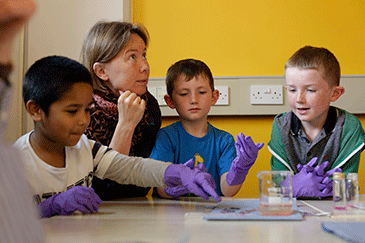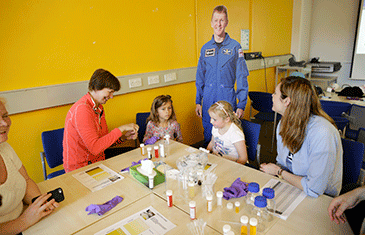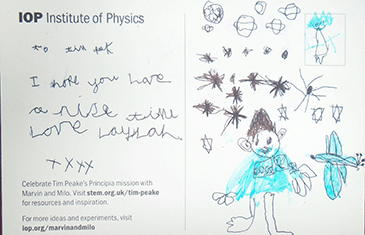Joints in Space: Outreach at the Festival of Communities

By Tina Chowdhury, Senior Lecturer in Bioengineering at the School of Engineering and Materials Science.
This blog post was originally posted on Tina Chowdhury's blog.
QMUL hosted a two-week festival involving communities and local organisations in Tower Hamlets to celebrate the very best of health, life, science, engineering and the arts. The festival kick started with a fun day at Stepney Green Park with over 1500 locals taking part in interactive demonstrations and hands-on activities.
Both the children and adults explored a full-size tyrannosaurus rex skull with scientists who talked about the prehistoric animal’s eating habits. There were activities that created quantum physics and the universe with Lego and a poo making exercise using crickets, chocolate and plastic tubing.
At the final day of the festival, held at the QMUL MIle End campus, my team organised our first workshop called Staying Strong – Joints in Space with the support of Mission Control and the UK Space Agency.

The golden rule of joint health is to exercise to help the tissues stay strong and healthy. The scientific jargon for exercise is called mechanotransduction which means the more you move, the less stiffness you will experience. This is because our research in mechanotransduction has shown that mechanical forces help to stretch the cells and protect the tissues in the joints.
The workshop discussed how exercise and diet effects joint health. The children worked with scientists from the Institute of Bioengineering (James Taylor, David Barrett), and investigated how too much, or too little exercise affects cartilage (squashy), muscle (stretchy) and bone (hard) tissues and which foods are good or bad for bone health (eg. calcium).
We also considered how extreme environments such as space or “microgravity” can have a detrimental impact on tissue health.
Mission challenges included:
• Build strong bones in 3D.
• Investigate what happens to your joints if you do too much, or too little exercise.
• Consider how space affects cartilage (squashy), muscle (stretchy) and bone (hard) tissues.
• Grow artificial tissues with seaweed and sugar.
Tim Peake appeared a few times during the workshop, can you spot him in the picture? We discussed ways to help Tim strengthen the tissues in the knee joint via mechanotransduction but concluded that Tim’s diet needed a bit of improvement. The children developed new ways to package food and included 1. steak & chips delivered using microcapsule technology or 2. banane frite with ice cream using 3D fibrous biomaterials.

With all the excitement, there was enough time for my daughter to write a postcard to Tim. Bottom right shows Tim on board the ISS with stars, planets and aliens flying above at speeds of up to 28, 000 miles per hour. Good luck Tim with the journey back to planet Earth!
Contact the Centre for Public Engagment if you would like to discuss your own idea for an outreach activity. If you're interested in the design of 'Joints in Space' you can contact Tina Chowdhury directly.
This blog post was originally posted on Tina Chowdhury's blog.
Written by Tina Chowdhury,
Senior Lecturer in Bioengineering
School of Engineering and Materials Science.